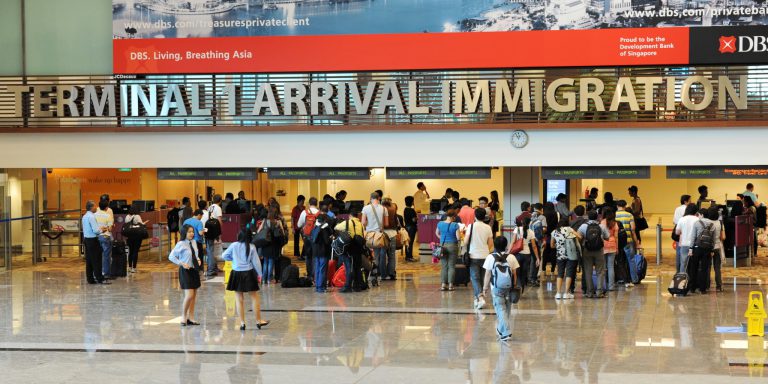
Earlier this month, the UK’s Home Secretary Theresa May announced new immigration reforms that will force thousands of international students to leave the UK upon completion of their studies.
The new rules will prevent college students from staying on to work in the UK unless they leave the country first, leaving many foreign students feeling cheated and unwelcome. The reforms form part of the government’s attempt to reduce student visa fraud and cut net immigration below 100,000 per year.
Stay tuned to see how this will affect international students! http://t.co/jj2T2Xek9i
— KCL Mexican Society (@MexicanSociety) February 10, 2015
With further measures to tackle immigration planned for later in the year, prospects are looking increasingly bleak for foreign students hoping to study in the UK. The Guardian quotes: “The number of foreign students in college education has slumped in recent years from a peak of more than 110,000 in 2011 to 18,297 in the last 12 months.”
This being the case, where are foreign students looking to re-invest their future if post-study work is not an option in the UK, and which countries are providing the best policies and student opportunity that could see them reap the benefits of the UK’s visa crackdown?
#TheresaMay #immigration reform is ridiculous. So hard for good foreign grads to get jobs. Here’s my take from June. https://t.co/FPKD1rKYwj
— Benedict Nicholson (@BenedictNichol1) July 13, 2015
Canada
The United Nations has consistently rated Canada as one of the best places to live, and its ‘Canadian Experience Class’, the country’s immigration category created for temporary foreign workers who wish to become permanent residents, is considered far more liberal than the policies employed by the UK. The appeal of the Canadian Experience Class and the opportunity it represents attracts a mass of qualified international students which in turn creates more jobs and spurs economic growth.
According to the National Strategy for International Education: “Canada wants to become the 21st Century leader in international education in order to attract top talent and prepare our citizens for the global marketplace, thereby providing key building blocks for our future prosperity.”
#Canada needs immigrants to solve its low growth problem and protect its economic future. See why: http://t.co/LYspPFuz3k
— Canadian Immigration (@canadavisa_com) August 17, 2015
With the goal of doubling the number of full-time international students to more than 450,000 over the next decade, this categorises Canada as one of the most desirable relocation countries for prospective students.
Australia
International students can rejoice as new arrivals into Australia are welcomed with a brand new International Student Airport Desk. Minister for Trade and Tourism and Major Events, Stuart Ayres, says: “Implementing simple gestures, like a welcome desk, encourages students to return as ambassadors for the State and supports further growth in the sector.”
A Brief Outline on Changes in Australian Immigration 2015 http://t.co/QXH9jBBdI1
— Immigration DP (@immigration_dp) August 14, 2015
Along with significant changes made to the country’s temporary visa scheme in 2013, Australia has seen an increase in the number of students choosing to study and gain work experience after graduating, putting the country in the running for international students’ most desirable place to study. “Higher Education is Australia’s third largest export and set to be worth over $30bn by 2020 if government and institutions invest correctly” says Federal Education Minister, Christopher Pyne – take note Theresa May.
New Zealand
Dunedin City Council and its partners recently announced plans for a new ‘Job Ready Programme’ to help international students find the right jobs and retain their skills. Enterprise Dunedin export education co-ordinator, Sarah Gauthier, says: “Many international students dream of continuing their careers and lives in New Zealand, but lack the contacts and specific skills for local employment contexts, to help them transition from study to work”.
GNews: Getting Dunedin’s International Students Job Ready | Scoop News – http://t.co/W6vvPX68Mo (press release)… http://t.co/TaZ7ynJcaZ
— DunedinNews (@DunedinNews) July 28, 2015
Meanwhile, New Zealand has invested in its ever-growing international student market, leading to many more fantastic opportunities.
USA
With USA being at the forefront of welcoming international students into the country, the Obama administration has proposed to provide a six-year work permit to graduates of Bachelor’s degree programmes that involve Science, Technology, Engineering or Maths. The regulations say subjects could work up to three years after graduation in student status, then go on to get a Master’s degree and work for three more years post-study, which massively benefits international students studying in America.
U.S. #Colleges: The American Dream For International Students | @k_hua @forbes http://t.co/Ls4AEoTwVI #highered
— Let’s Talk (@LetsTalk06) August 18, 2015
If that wasn’t enough its no surprise colleges have now turned to social media to further recruit more foreign students. Recent talks between university officials have found that social media platforms and apps could and should be used to attract more international students. A representative from Washington & Jefferson College in Washington, Pennsylvania says, “In just six weeks more than 200 students have signed up for the mobile app Snapchat.”
With almost 900,000 international students studying at American colleges during the last academic year, we know the U.S won’t certainly won’t stop there, and have plans in place to significantly increase this number in the year to follow.
Singapore
The Singapore government has spent in total $400 million to help encourage international students to study in their country – need we say more?
Singapore Management University offers a #Scholarship for International Students (Deadline:31/8/2015) http://t.co/QKm1IabNBn
— EnglishPAL (@EnglishPAL) August 11, 2015
Education Minister Heng Swee Keat revealed that he was giving students tuition grants of a total of around $210 million per year and with world-class universities based in this country ranking no.1 in Asia and No.22 worldwide, Singapore has long attracted students into its international education hub.
With countless opportunities and investment into international study around the world, it is clear that the UK’s recent reforms could cause a decline in the country’s international student population, which would then have a detrimental effect on the country’s economy. While Australia, USA, New Zealand, Canada and Singapore continue to invest, the UK will continue to lose sponsorship licenses with over 800 “bogus colleges” and publicly funded colleges currently caught up in the ‘crackdown’. It seems that Theresa May’s reforms could have made the difficult question of where to study significantly easier for prospective international students across the globe.
Image via Shutterstock.







